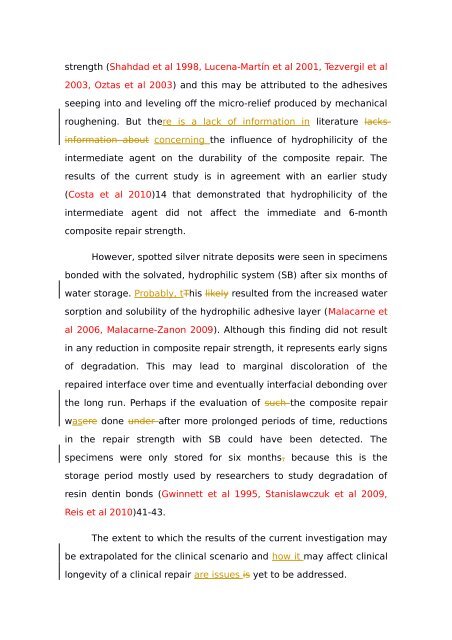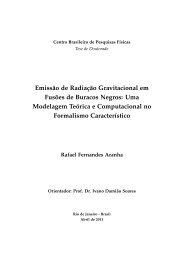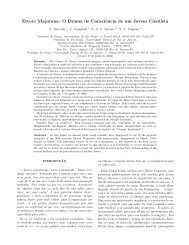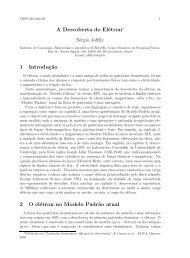Strength of composite repair using different diamond ... - Cbpfindex
Strength of composite repair using different diamond ... - Cbpfindex
Strength of composite repair using different diamond ... - Cbpfindex
Create successful ePaper yourself
Turn your PDF publications into a flip-book with our unique Google optimized e-Paper software.
strength (Shahdad et al 1998, Lucena-Martín et al 2001, Tezvergil et al<br />
2003, Oztas et al 2003) and this may be attributed to the adhesives<br />
seeping into and leveling <strong>of</strong>f the micro-relief produced by mechanical<br />
roughening. But there is a lack <strong>of</strong> information in literature lacks<br />
information about concerning the influence <strong>of</strong> hydrophilicity <strong>of</strong> the<br />
intermediate agent on the durability <strong>of</strong> the <strong>composite</strong> <strong>repair</strong>. The<br />
results <strong>of</strong> the current study is in agreement with an earlier study<br />
(Costa et al 2010)14 that demonstrated that hydrophilicity <strong>of</strong> the<br />
intermediate agent did not affect the immediate and 6-month<br />
<strong>composite</strong> <strong>repair</strong> strength.<br />
However, spotted silver nitrate deposits were seen in specimens<br />
bonded with the solvated, hydrophilic system (SB) after six months <strong>of</strong><br />
water storage. Probably, tThis likely resulted from the increased water<br />
sorption and solubility <strong>of</strong> the hydrophilic adhesive layer (Malacarne et<br />
al 2006, Malacarne-Zanon 2009). Although this finding did not result<br />
in any reduction in <strong>composite</strong> <strong>repair</strong> strength, it represents early signs<br />
<strong>of</strong> degradation. This may lead to marginal discoloration <strong>of</strong> the<br />
<strong>repair</strong>ed interface over time and eventually interfacial debonding over<br />
the long run. Perhaps if the evaluation <strong>of</strong> such the <strong>composite</strong> <strong>repair</strong><br />
wasere done under after more prolonged periods <strong>of</strong> time, reductions<br />
in the <strong>repair</strong> strength with SB could have been detected. The<br />
specimens were only stored for six months, because this is the<br />
storage period mostly used by researchers to study degradation <strong>of</strong><br />
resin dentin bonds (Gwinnett et al 1995, Stanislawczuk et al 2009,<br />
Reis et al 2010)41-43.<br />
The extent to which the results <strong>of</strong> the current investigation may<br />
be extrapolated for the clinical scenario and how it may affect clinical<br />
longevity <strong>of</strong> a clinical <strong>repair</strong> are issues is yet to be addressed.

















